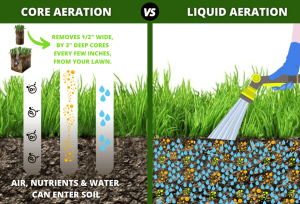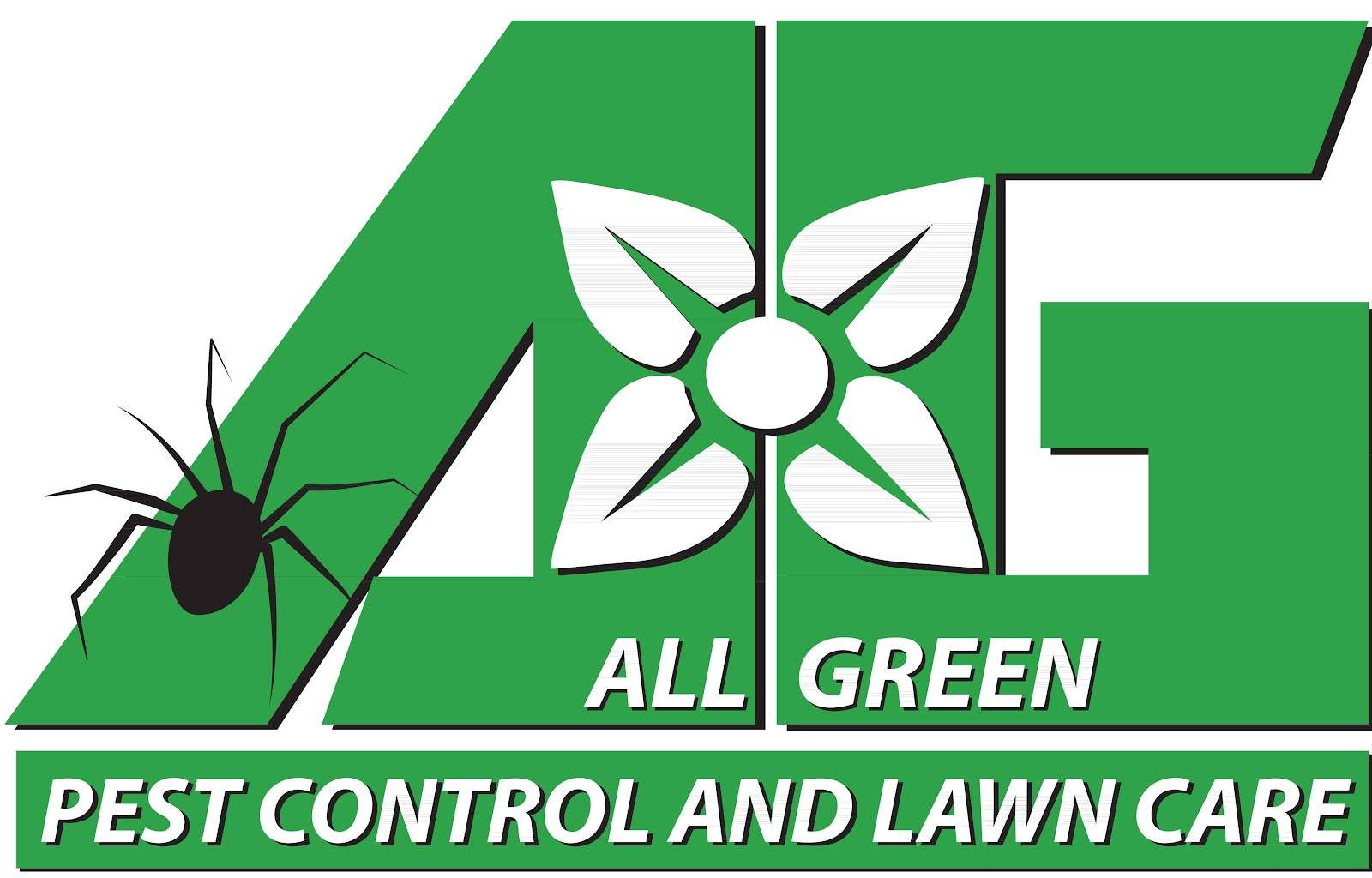
Lawn aeration is an essential practice for maintaining healthy grass and promoting robust root growth. Two primary methods of aeration are mechanical aeration and liquid aeration. Each approach has its benefits and drawbacks. This blog post will explore these methods in detail to help you make an informed choice for your lawn care needs.
Mechanical Aeration
Benefits of Mechanical Aeration
1. Enhanced Soil Structure
Mechanical aeration, typically achieved using a core aerator, removes plugs of soil from the lawn. This process improves soil porosity and structure, allowing air, water, and nutrients to penetrate deeper into the soil.
2. Increased Root Growth
By alleviating soil compaction, mechanical aeration encourages deeper root growth. This results in a healthier and more resilient lawn that can better withstand drought and disease.
3. Effective Thatch Management
Mechanical aeration helps break down thatch, a layer of dead grass and organic material that can accumulate on the soil surface. By reducing thatch buildup, mechanical aeration promotes a healthier growing environment.
4. Long-lasting Results
The benefits of mechanical aeration can last for several months, making it a sustainable solution for lawn health when performed regularly.
Drawbacks of Mechanical Aeration
1. Labor and Equipment Costs
Mechanical aeration requires specialized equipment, which can be expensive to purchase or rent. Additionally, the process can be labor-intensive, especially for larger lawns.
2. Timing and Weather Dependency
The effectiveness of mechanical aeration can be influenced by weather conditions. It’s best performed during the growing season when the grass is actively growing, which may limit scheduling flexibility.
3. Temporary Disruption
The aeration process can temporarily disrupt the appearance of your lawn. Soil plugs left on the surface may take time to break down and blend back into the grass.
Liquid Aeration
Benefits of Liquid Aeration
1. Quick Application
Liquid aeration involves using liquid solutions (like soil penetrants) to reduce soil compaction and improve water infiltration. The application process is often quicker and less labor-intensive than mechanical methods.
2. Lower Initial Costs
Liquid aeration products tend to be more affordable than purchasing or renting mechanical equipment. This makes it an attractive option for homeowners on a budget.
3. Immediate Results
Liquid aeration can provide immediate improvements in soil structure and moisture retention, making it a good option for addressing urgent lawn health issues.
4. Reduced Soil Compaction
Some liquid products are designed to break down soil particles, making it easier for air and water to penetrate. This can be beneficial in compacted soils, and is especially helpful with compacted clay based soils (even more successful than mechanical aeration for clay based soils).
5. Helps to release trapped nutrients within clay based soils
Drawbacks of Liquid Aeration
1. Shorter Term
The benefits of liquid aeration may not last as long as those from mechanical aeration. Regular applications may be necessary to maintain soil health.
2. Liquid Residues
The use of liquid can raise concerns about residues left in the soil, which might affect the local ecosystem. Careful consideration is necessary when selecting products.
3. Limited Efficacy
Liquid aeration is often less effective than mechanical aeration in heavily compacted soils or in lawns with significant thatch buildup.
4. Not a Comprehensive Solution
While liquid aeration can help with specific issues, it does not provide the comprehensive benefits of mechanical aeration, such as the physical removal of soil plugs (mechanical aeration is great for lawns with sufficient and healthy topsoil, whereas liquid aeration is better for heaviliy compacted, clay based soils, or nutrient difficient soil types).
Conclusion
Choosing between mechanical and liquid aeration for your lawn depends on your specific needs, budget, and lawn condition. Mechanical aeration offers long-term benefits and thorough soil improvement but requires more investment in equipment and labor. In contrast, liquis aeration provides a quick, cost-effective solution for immediate issues but may require more frequent applications and lacks the depth of mechanical aeration.
References
For further information, consider exploring resources from:
1. The Lawn Institute
2. Penn State Extension
3. University of Florida IFAS Extension
Be sure to check out our tips about the best plants, bulbs, and trees to plant in the late fall!
